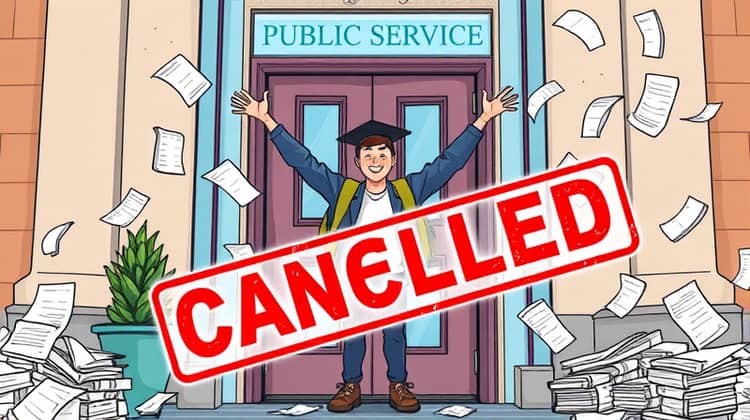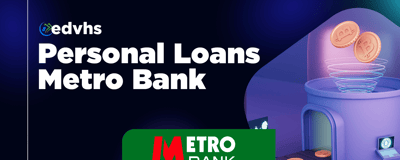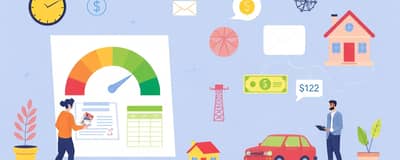Loan Forgiveness Programs are designed to help borrowers reduce or eliminate their outstanding student loan debt, enabling them to achieve financial stability and pursue their life goals without the burden of loans. In the evolving landscape of higher education financing, these programs offer a valuable lifeline for eligible individuals, allowing them to navigate the complexities of repayment effectively.
However, understanding eligibility criteria and the various types of loan forgiveness programs can be daunting. With numerous options available, potential applicants must familiarize themselves with the specifics of each program to make informed decisions about their financial future.
In this article, we will explore the different types of loan forgiveness programs, eligibility criteria, and essential tips for navigating these opportunities. Whether you are a teacher, public service worker, or simply seeking relief from your student loans, knowing your options can lead to significant advantages in managing your debt.
What is Loan Forgiveness?

Loan forgiveness refers to the cancellation of a part or all of a borrower's student loans, meaning that they are no longer required to repay the debt under certain conditions. This process is particularly advantageous for those whose careers align with specific public service objectives or those who face financial hardship.
In order to qualify, borrowers typically must meet specific program standards which may include a history of regular payments, employment in qualifying sectors, and adherence to income-driven repayment plans. Each program sets distinct criteria that must be satisfied before forgiveness is granted, highlighting the importance of understanding individual options.
Overall, loan forgiveness can provide significant relief for borrowers, but it requires careful attention to detail in terms of eligibility and application processes. It’s essential to be proactive in understanding the nuances of each program.
Types of Loan Forgiveness Programs

There are several types of loan forgiveness programs available, each catering to different professions and circumstances. These programs vary in terms and conditions, making it imperative to research which ones align with your career and repayment situation.
- Income-Driven Repayment Plan Forgiveness
- Public Service Loan Forgiveness (PSLF)
- Teacher Loan Forgiveness
- State-Specific Loan Forgiveness Programs
- Private Loan Forgiveness or Discharge
How to Determine Your Eligibility

Determining eligibility for loan forgiveness programs can be a complex task due to varying requirements for each specific program. It typically involves assessing your employment status, loan types, and payment history.
- Check if your profession qualifies for specific loan forgiveness programs.
- Assess whether you meet the repayment plan requirements.
- Gather documentation, including payment records and employment verification.
Providing accurate information and documentation is crucial during the application process, so keep all records organized and accessible.
Income-Driven Repayment Plan Forgiveness

Income-driven repayment plans adjust your monthly payment based on your income and family size, making it more manageable for borrowers with limited financial resources. After 20 to 25 years of qualifying payments, any remaining balance may be forgiven.
These options provide a viable path for borrowers struggling to keep up with standard payments, ultimately providing a sense of relief and a clearer path to financial stability.
Public Service Loan Forgiveness (PSLF)

PSLF is designed for borrowers who work in qualifying public service jobs, including government and nonprofit positions. This program forgives the remaining balance of loans after 120 qualifying monthly payments, under a qualifying repayment plan. Given that many industries are facing workforce shortages, particularly in public service, this program is a powerful incentive for individuals to pursue careers in these fields.
To qualify, applicants must meet specific requirements such as working full-time in a qualifying role and having federal Direct Loans or consolidating other types into a Direct Consolidation Loan. Applicants must also ensure that their payments are made under a qualifying repayment plan.
Furthermore, it is crucial to regularly certify employment with the PSLF servicer to maintain eligibility and track progress toward forgiveness, as many borrowers may be unaware of the need to verify their work annually.
Teacher Loan Forgiveness

Teacher Loan Forgiveness is aimed at educators who serve in low-income schools or educational service agencies. Eligible teachers can have up to $17,500 of their federal student loans forgiven after fulfilling specific teaching obligations, which typically require five consecutive years of service in an eligible institution.
This program not only recognizes the contributions of teachers but also addresses the significant student loan burdens they often face, potentially providing a critical financial reprieve.
State-Specific Loan Forgiveness Programs

Many states offer their own loan forgiveness programs, which can vary widely in terms of eligibility and benefits. These programs may target specific professions, such as healthcare providers or social workers, providing relief to help address workforce shortages in underserved areas.
Researching state-specific programs can unveil additional forgiveness opportunities that align with your career or residency, potentially enhancing your overall financial wellbeing.
Private Loan Forgiveness or Discharge

While most loan forgiveness programs focus on federal student loans, there are options for private loan borrowers as well. Some lenders may offer forgiveness or discharge options in situations such as total and permanent disability or school closure.
It’s important for borrowers to communicate directly with their private lenders to explore any possible relief options, as these programs and policies can differ significantly between lenders.
Factors Affecting Your Eligibility

Eligibility for loan forgiveness can be influenced by various factors that applicants should take into account. Understanding these considerations is essential for anyone seeking to qualify for forgiveness.
Some common factors include:
- Type of loan you have (federal vs. private)
- Your employment status and sector
- Payment history
- Compliance with repayment plan requirements
- Geographic location and state-specific programs
It’s crucial to analyze these factors comprehensively, as they can significantly impact your ability to qualify for loan forgiveness programs that may be necessary for your financial success.
What if You’re Not Eligible?

If you find that you do not meet the requirements for any loan forgiveness program, it is essential to explore alternative repayment strategies. Consider taking advantage of income-driven repayment plans, refinancing options, or deferment and forbearance if you are facing financial difficulty.
Also, it may be beneficial to focus on building a solid budget and repayment plan, while keeping an eye out for changes in legislation that may impact your eligibility for forgiveness in the future.
Recent Changes and Updates

Loan forgiveness programs and policies are subject to change based on new legislation and educational initiatives. In recent years, there have been numerous updates aimed at making forgiveness more accessible to borrowers, especially in light of the ongoing public discourse surrounding student debt crisis.
Keeping abreast of these changes is crucial for prospective applicants to ensure that you can take advantage of the latest opportunities for loan forgiveness that may arise.
Tips for Navigating Loan Forgiveness Programs

Navigating the landscape of loan forgiveness can be overwhelming, but having a strategy can simplify the process significantly. Start by understanding the specifics of the loan forgiveness programs for which you might qualify, including eligibility requirements and application processes.
Additional tips include:
- Stay organized with your documents and payment history.
- Regularly check for updates and changes in forgiveness programs.
- Seek advice from financial advisors or organizations specializing in student loan assistance.
- Maintain clear communication with loan servicers regarding your status.
Being proactive and informed can increase your chances of successfully navigating the application process toward achieving loan forgiveness.
Conclusion

Loan forgiveness programs offer a unique opportunity for borrowers to alleviate the burden of student debt while working in service-oriented professions or under challenging financial circumstances. Understanding eligibility requirements and available options is crucial to making the best financial decisions.
As eligibility varies across different programs, it is essential to conduct thorough research and stay informed about changes in policy. With the right information and proactive planning, borrowers can leverage these programs to secure a brighter financial future.














